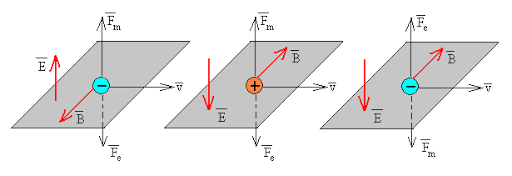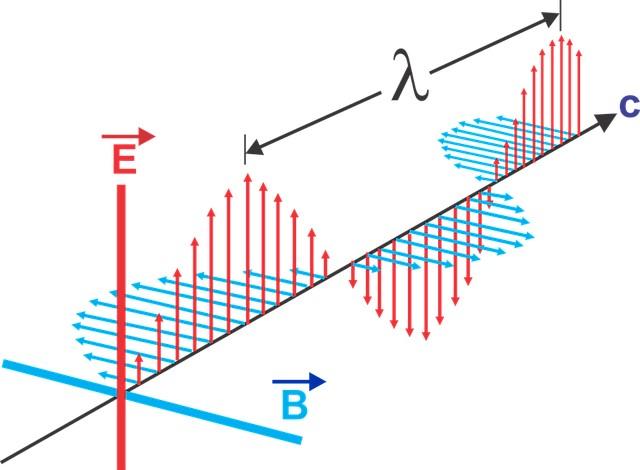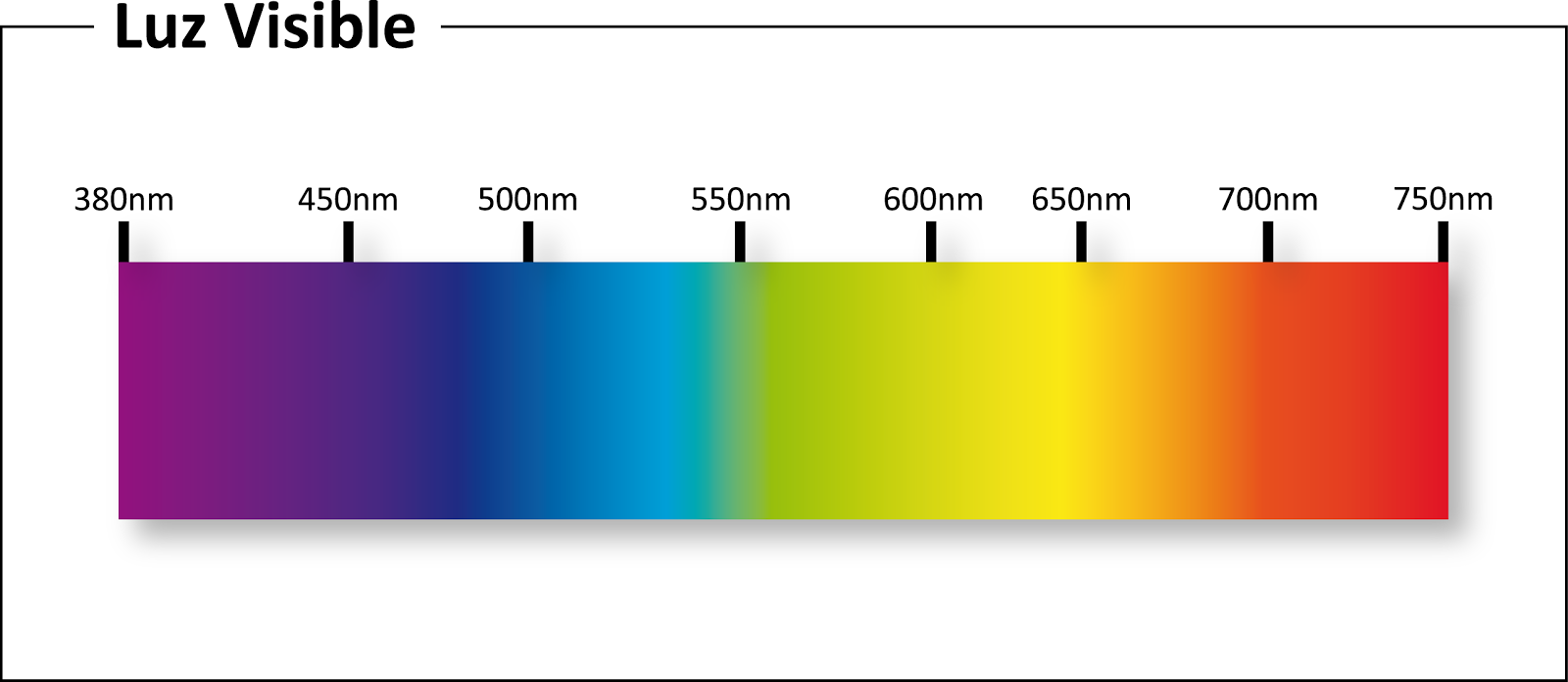What are Electromagnetic Waves?
The electromagnetic waves They are a fundamental phenomenon in physics that is characterized by the propagation of electric and magnetic fields through space. These waves are composed of electric and magnetic fields that oscillate perpendicular to each other and propagate at the speed of light in a vacuum (which is approximately 299.792.458 meters per second or about 186.282 miles per second).
How do electromagnetic waves travel?

When the 2 fields, the electric and the magnetized, change or move together, they generate electromagnetic waves.
Electromagnetic radiation is produced by electrical and magnetized particles moving at the same time (fluctuating).
Each particle produces what is called a field, hence it would also be said that it is a mixture of an electric field with a magnetized field.
These electromagnetic radiations produce waves that can spread (travel) through the air and even through a vacuum.
Suppose we move an electrically (or magnetically) charged particle like the one in the figure in an oscillatory way (from top to bottom):

As we can see, an alteration is created around it, which is what we call a wave.
This wave depends on the speed and force with which we move the particle, and on the amplitude or distance between the beginning and the end of the journey.
By changing these values we can change the size of the wave.
The wave produced will have the same shape but more gigantic and/or with more ripples per second.

If the particle has an electrical component, but also a magnetic one, we already have produced electromagnetic radiation, with its electromagnetic wave.
Electromagnetic waves are generated when an electric field (shown by red arrows) couples with a magnetic field (shown by blue arrows).
The electric and magnetic fields of an electromagnetic wave are perpendicular to each other and are in the direction of the wave.
But let's analyze the wave produced.
To measure a wave we have three fundamental data as we can see in the next figure:
Parts of an Electromagnetic Wave
Wavelength: Distance between 2 crests.
Amplitude: It is the maximum alteration of the wave. Half the range between crest and trough.
Frequency: Number of times the wave is repeated per unit of time. If the Hertz is used, it is the number of times the wave is repeated per second.
In addition to this there are two other interesting facts:
Period: 1/frequency. It is the inverse of the frequency.
Speed: the speed of the wave depends on the medium through which it spreads (where it travels). If the wave travels through empty space, its speed is equal to that of light, three hundred thousand kilometers per second. If it propagates through the air it changes, but it is practically the same as that of the vacuum.
Finally we have the wave circulating through the air.
Speaking a bit about everything... it turns out that an electromagnetic wave is not produced by a single particle, but by two different particles, one electric and the other magnetic.
It should also be noted that its movement is perpendicular, which means that the wave is a mixture of 2 perpendicular waves, one electric and the other magnetized.
We can see waves produced by the two particles in unison. One moves on the Z axis and the other on the Y axis.
Here you can see an animation of the production of an electromagnetic wave.
You will see how the particles move in each axis and how they produce the wave: Electromagnetic Wave
Now we are going to tell you what is the reason why electromagnetic waves are so extremely important.
Because they are a way of being able to transport energy through the air. It has no obstacles.
A signal can be sent from a receiver (the starting point where the wave is generated) and received at a receiver (the starting point where we pick up the wave).
This wave can contain information, that first, this information will have to be transformed into a signal in the form of an electromagnetic wave, and once received by the receiver, decode it and perceive the same information that was sent.
With all this we mean that we can now send information over the air without the need for cables or physical elements.
Types of Electromagnetic Waves
Electromagnetic waves are used for radio, television, internet, etc.
But we have a problem. Many waves travel through the air.
How do we distinguish them?
We know that because of its Frequency (it memorizes the number of times the wave is repeated), but it is also that the higher the frequency, the less distance from the wave.
Think of a string when we move it (frequency with which we move it), if we move it very slowly we create very wide waves (long wavelength) but if we move it very fast the waves are narrow (little wavelength) : Frequency large = small wavelength and small Frequency = large wavelength.
We already have our waves distinguished by their wavelength or by their frequency.
A scale has been created to classify them, by increasing order of wavelengths (or decreasing by their frequency) called Electromagnetic Phantom.
Depending on the wave, it will belong to one spectrum or another.
Electromagnetic waves are divided into different types or regions of the electromagnetic spectrum, depending on their frequency and wavelength. These are the 7 types of electromagnetic waves: Radio waves, microwaves, infrared, visible light, ultraviolet light, x-rays and gamma rays. Below we explain them in detail.
- Radio waves: These are electromagnetic waves with low frequencies and long wavelengths. They are used for radio and television communication, as well as in wireless technologies, such as Wi-Fi and Bluetooth.
- Microwave oven: Microwaves have higher frequencies than radio waves and are used in applications such as microwave ovens and in satellite communications.
- Infrared (IR): Infrared waves have shorter wavelengths and are used in remote control devices, motion sensors, and in night vision applications.
- visible light: This is the portion of the electromagnetic spectrum that we can perceive with our eyes. Visible light is divided into colors ranging from red (longer wavelengths) to violet (shorter wavelengths).
- Ultraviolet (UV) light: The ultraviolet spectrum is above visible light and is divided into three categories: UV-A, UV-B and UV-C. It is used in applications such as sterilization and document fraud detection.
- X-rays: X-rays have high energy and are used in medicine to obtain internal images of the body, in dental x-rays, and in the inspection of industrial structures.
- Gamma rays: Gamma rays are the most energetic form of electromagnetic waves and are used in radiotherapy, space exploration and nuclear research.
- Microwave background radiation: This is cosmic microwave radiation that fills the universe and originated shortly after the Big Bang. It is an important source of information for cosmology.
These are just a few examples of the different regions of the electromagnetic spectrum. Each type of electromagnetic wave has specific properties and applications, and its interaction with matter varies depending on its frequency and energy. Understanding these types of waves is essential for numerous applications in technology and science.
Electromagnetic Wave Measurement
The electromagnetic spectrum is organized by frequency.
Generally lower frequency radiation is on the left, and higher frequency radiation is on the right.
Wave properties at different frequencies behave differently throughout the phantom.
A material that is transparent to perceptible light may be opaque to infrared light, but again transparent to radio frequency radiation (for example, glass).
Note that we measure it in Hertz, Mega Hertz, etc. When we say this we mean by its frequency (could be by its wavelength).
Apart from this, each device emits waves of different frequencies and if we want to produce mobile telephone waves, we must emit them in a certain frequency band so as not to confuse them with others.
Waves emitted with a frequency above infrared are visible waves, such as sunlight. The lower frequency ones cannot be seen, a clear example would be the ones on the radio, but beware even if we don't see them, they exist.
Due to the importance of the different waves with frequencies, there are so-called "Electromagnetic Wave Meters" in the world, which are sensors that measure the frequencies and the total magnetized field that exists in a place or that is produced by some object. .
They are generally used to measure possible health hazards related to exposure to electromagnetic fields, and compliance with the exposure limits set by regulations. They used to measure the electric field and the magnetic field separately.
Summarizing
We are surrounded by traveling waves and most of them we don't see, even though we already know they are there. The antennas emit and receive these signals, which are first encoded and, upon receiving them, are decoded to perceive the information that we transmit.
Source of information used: https://www.areatecnologia.com/ondas-electromagneticas.htm







